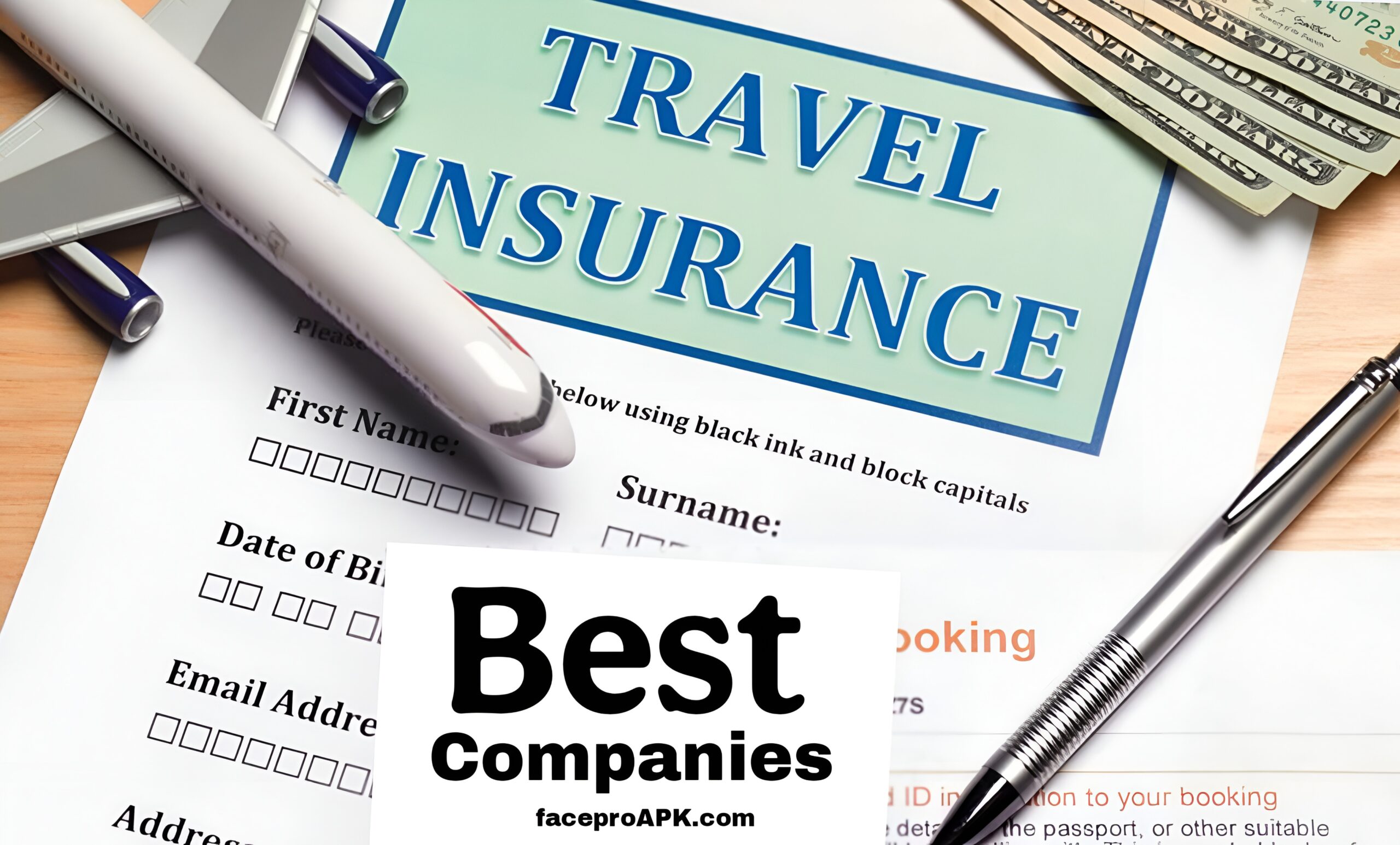Planning a trip in 2025? Whether it’s a quick getaway to the coast or a bucket-list adventure abroad, the last thing you want is for unexpected hiccups to derail your plans. Travel insurance companies in the USA are stepping up their game this year, offering smarter coverage for everything from flight delays to medical emergencies. With travel costs climbing and disruptions on the rise, picking the right provider isn’t just smart—it’s essential for peace of mind.
Why Top Travel Insurance Companies in the USA Matter in 2025
Travel’s back in full swing, but so are the curveballs: think stormy weather grounding flights or a sudden health issue popping up halfway across the world. Top travel insurance companies are more relevant than ever because they shield you from financial hits that could turn a dream vacation into a nightmare. In 2025, with average trip costs hitting around $7,200—up 24% from last year—skipping coverage feels riskier than ever. These companies aren’t just safety nets; they’re your backstage pass to worry-free wandering.
Background & Importance of Travel Insurance
Why People Need It
Let’s face it: life doesn’t pause for vacations. A family emergency, a canceled concert, or even a sprained ankle on a hike can upend everything. Travel insurance steps in to cover non-refundable bookings, medical bills abroad (where costs can skyrocket), and even lost luggage full of souvenirs. It’s especially clutch for families juggling kids’ schedules or seniors eyeing international jaunts, where health concerns loom larger. Without it, you’re gambling with your hard-earned cash—I’ve heard stories from friends who shelled out thousands for unused hotel nights after a flu hit. It’s that buffer that lets you say “yes” to spontaneous plans without the “what ifs.”
Current Relevance in the USA
In the USA, where over 70 million folks jet off annually, travel insurance adoption is surging—up 14% in 2024 alone, per industry reports. Globally, it’s even hotter, with the market projected to balloon to $16 billion by 2030. But stateside, it’s all about those domestic road trips and international escapes to Europe or Mexico. With 2025’s wild weather forecasts (hello, intense hurricane season) and lingering post-pandemic jitters, 50% of Americans now snag coverage before takeoff. It’s not hype; it’s a response to real risks, from 15% more weather-related claims to the push for embedded options at booking.
How Travel Insurance Works
The Concept Explained
At its heart, travel insurance is a contract that reimburses you for covered losses during your trip. You pay a premium upfront (usually 4-8% of your trip cost), and in return, the insurer covers predefined scenarios like cancellations or emergencies. File a claim with receipts and details, and—fingers crossed—they process it quickly, often via app or hotline. It’s not a get-out-of-jail-free card for everything (no coverage for “boredom,” sadly), but it handles the big stuff so you can focus on the fun.
Who It’s Designed For
These policies fit a wide crowd: adventure seekers tackling Antarctica cruises (costs averaging $16,000), families road-tripping cross-country, or business travelers dodging delays. Retirees love the medical focus for overseas jaunts, while millennials opt for budget plans covering gadgets and delays. If you’re booking non-refundables or heading where healthcare’s pricey (like Europe), it’s tailor-made for you. Even frequent flyers snag annual plans to cover multiple hops without repeating the hassle.
Core Elements of Top Travel Insurance Companies
What makes a travel insurance company stand out? It’s the nuts-and-bolts features that deliver when you need them. Here’s what to look for in the best ones:
- Trip Cancellation/Interruption Coverage: Reimburses 100-200% of prepaid costs if illness, weather, or job loss forces changes—up to $50,000 limits in premium plans.
- Emergency Medical and Evacuation: Covers doctor visits ($50,000-$500,000) and airlifts home ($250,000-$1 million), crucial since U.S. plans often bail abroad.
- Baggage Delay/Loss Protection: $500-$3,000 for misplaced suitcases, plus $100-$600 daily for essentials after a 6-12 hour wait.
- 24/7 Assistance Hotline: Round-the-clock help for translations, cash advances, or legal referrals—multilingual for global peace.
- Cancel for Any Reason (CFAR) Upgrade: Optional add-on reimbursing 50-80% for non-covered reasons, like cold feet.
- Pre-Existing Condition Waiver: Covers chronic issues if bought within 14-21 days of your first deposit.
These pieces puzzle together for comprehensive protection, varying by provider.
Advantages of Choosing Top Travel Insurance Companies
Opting for a solid travel insurance company isn’t just precaution—it’s a smart investment that pays dividends in calm and cash saved. Picture this: you’re lounging on a beach, not stressing over “what ifs.” The real wins? Financial recovery from disruptions (top claims: cancellations at 40%) and access to global networks for quick fixes. In 2025, with medical claims up 20%, these perks shine brighter, letting you reclaim trips without regret.
- Financial Safeguard: Recoup up to 100% on flights/hotels if plans tank—vital when trips average $7,900.
- Health Security Abroad: Fills gaps in domestic plans, covering $370 average delay payouts or $17,000 evacuations.
- Hassle-Free Claims: Digital apps speed processing (some in 24 hours), with 90% satisfaction in top firms.
- Custom Flexibility: Add-ons like pet care or adventure sports tailor to your vibe, without overpaying.
- Annual Savings: Multi-trip plans cost under $1/day, beating single policies for road warriors.
- Peace of Mind Boost: 65% of insured travelers report less anxiety, per surveys—worth every penny.
One buddy of mine dodged a $2,000 loss on a canceled family cruise thanks to his policy; stories like that make it feel like a high-five from fate.
Challenges or Limitations of Travel Insurance
No policy’s perfect, and travel insurance has its blind spots. Claims can drag (average 30-45 days), and exclusions—like pandemics or “known events”—trip folks up. Premiums rise with age (Gen X pays 20% more than millennials), and not everything’s covered (no regrets over bad weather if forecasted). Be wary of fine print: some require primary health filing first, adding red tape. Still, awareness turns these hurdles into speed bumps—always chat with reps pre-purchase.
Users should note: Coverage isn’t automatic for high-risk spots (e.g., war zones), and alcohol-related incidents often void claims. Shop wisely to match limits to your risks.
Recent Trends in Travel Insurance for 2025
2025’s travel insurance scene is buzzing with tweaks that make coverage feel futuristic. Medical add-ons are exploding—up 25% in uptake—as travelers prioritize health post-2024’s disruptions. Selective bundles (1-2 benefits) now snag 36% of sales, ditching all-in-one bloat for targeted protection. Embedded options at airline checkouts boost uptake by 15%, turning impulse buys into smart shields. AI claims processing cuts wait times 40%, and eco-riders (carbon offset reimbursements) appeal to green globetrotters. Hurricane prep? Parametric payouts trigger instantly for storms, a game-changer with severe seasons ahead. Overall, it’s leaner, greener, and glued to your booking flow.
Market Comparison: Top Travel Insurance Companies vs. Alternatives
The travel insurance market’s crowded, but leaders like Travelex and Nationwide edge out credit card perks or basic health extensions. Cards cover delays ($100-$500) but skim on medical ($0 abroad often), while self-insuring risks total loss. Standalone firms win with customizable depth, though annual plans from Allianz beat piecemeal buys for frequent flyers.
- Vs. Credit Card Coverage: Policies offer $1M evacuations; cards cap at $5,000—fine for basics, but flop on big medical.
- Vs. Health Insurance Add-Ons: Travel plans provide primary abroad care ($250K+); health extensions are secondary, slower.
- Vs. Tour Operator Policies: Operators’ cheapies ($20-50) limit to $10K cancellation; top firms hit $50K with 24/7 global aid.
- Vs. Annual Multi-Trip: Single plans suit one-offs ($200 avg.); annuals ($300/year) save 50% for 5+ trips.
- Vs. Budget vs. Premium: Basics ($100) cover essentials; premiums ($400) add CFAR, adventure—better for $10K+ jaunts.
For value, top travel insurance companies balance breadth without bloat.
Cost & Value Factors of Travel Insurance
What Influences Pricing?
Travel insurance costs hinge on trip price (4-8% rule: $5K trip = $200-400), age (over 60? +30%), and destination (Bahamas pricier than Mexico). Length matters—$21/day average—and add-ons like CFAR jack it 40-50% ($696 avg. policy). Domestic’s cheaper ($150) than international ($310), with medical-only at $35 vs. comprehensive $350. Shop around; quotes vary 20% by provider.
How to Find the Best Value
Maximize bang-for-buck by comparing via marketplaces (saves 15-20%). Prioritize primary medical for abroad, and snag waivers early. Annual plans under $1/day crush multiples for regulars. Read reviews—aim for 4.5+ stars—and bundle with bookings for 10% off. Test scenarios: a $7K Europe trip? $300 comprehensive beats $500 piecemeal.
Tips for Making the Right Choice in Travel Insurance
Nailing travel insurance boils down to your itinerary and wallet. Start early (within 21 days for waivers), and match coverage to risks—medical for seniors, cancellation for families.
- Assess Your Risks: High-adventure? Add sports rider. Budget trip? Skip CFAR.
- Compare Quotes: Use aggregators for 20+ providers; input exact details for accuracy.
- Check Ratings: Hunt A.M. Best A+ firms; Squaremouth scores over 4.3 signal reliability.
- Read Exclusions: Confirm weather, pre-existing, and “any reason” fine print.
- Go Annual if Frequent: 5+ trips? $300/year trumps $200 each.
- Bundle Smart: Pair with cards for extras, but verify gaps.
These moves turn shopping into a win.
Mistakes to Avoid with Travel Insurance
We’ve all been there—rushing a policy and regretting it later. Common slip-ups? Buying post-deposit (misses waivers) or skimping on medical (U.S. plans ghost abroad). Overlooking state rules (some exclude NY) or ignoring deductibles ($250 hidden hits) stings too. Don’t assume cards cover all— they don’t for evacuations.
Prevent by: Quoting pre-booking, triple-checking limits, and simulating claims via hotline. Mock a delay scenario; if support drags, bail.
Future Outlook for Travel Insurance
By 2030, the U.S. travel insurance market hits $16B, fueled by AI personalization (theme-based policies?) and blockchain claims (instant payouts). Embedded tech in apps will normalize it, with 60% uptake via airlines. Sustainability riders and parametric weather triggers rise, while VR simulations preview coverage. Post-2025, expect hybrid plans blending health wearables for dynamic pricing. It’s evolving from afterthought to adventure essential—smarter, faster, fairer.
Final Thoughts
From Travelex’s all-around prowess to Nationwide’s flexible fixes, top travel insurance companies in the USA for 2025 like Seven Corners and WorldTrips offer tailored shields against life’s plot twists. We’ve unpacked the why (rising costs, real risks), how (core coverages, claims ease), and must-dos (compare, customize). Whether chasing sunsets or summits, the right policy lets you pack light—worry-free.
So, book that ticket, grab coverage, and go chase the horizon. Just remember: read policies closely, claim promptly, and use it as intended—not a crutch for carelessness. Safe travels; the world’s waiting, and you’ve got the backup to enjoy every mile. What’s your next adventure?



